Are there really that many consumers interested in high-end headphones and personal audio? Some audiophiles scoff at the notion that the future of our industry is going to hinge on the growth of this segment — but we are big proponents of that growing reality.
As our coverage of CanJam NYC 2023 highlighted, there is a growing and diverse community of music listeners who see the value of high-end wireless headphones, DAPs, wired IEMs, Dongle DACs, and desktop headphone systems.
It has grown beyond the traditional Head-Fi customer.
“CanJam NYC 2023 was the most diverse and enthusiastic crowd I have ever seen at a Hi-Fi Show in over 25 years,” reported EIC Ian White who has covered more than 100 events in 5 countries since 1998.
Was the record breaking attendance a fluke? Something that was to be expected in the post–pandemic world with consumers looking for any opportunity to mingle?
There’s probably some truth to the second part but none of that can explain away the reality that the headphone space is growing into a $25 to $30 billion category globally over the next decade.
Inexpensive wireless audio products will represent a huge percentage of those sales, but there is no question that high-end companies have a real opportunity to sell better quality wireless loudspeakers, turntables, streamers, and portable audio components to a new generation of audiophiles.
One of the brands that is contributing to the growing base is EarMen.
For those who are not familiar with EarMen, the company is an offshoot of Auris Audio; which was founded in 2013 and builds some fantastic analog 2-channel components.
Over the past few years, I’ve been afforded the opportunity to listen to a complete system from Auris that included a turntable, power amplifier, and pre-amplifier and came away very impressed.
Their headphone amplifiers are also extremely well-designed and having owned the Auris Nirvana and Euterpe, I am more than familiar with their capabilities; we use the Euterpe when reviewing headphones and it’s well worth seeking out.
The problem for Auris was that the Euterpe was their entry level product and $1,699 USD is a very high entry-point for 99% of consumers.
The company did not want to dilute their brand which was becoming rather successful within the high-end headphone market; the company was competing with Linear Tube Audio, Cavalli Audio (when it still existed), HeadAmp, Ampsandsound, and Woo Audio — five brands that were hugely popular with the Head-Fi crowd.
Auris also realized that they needed to reach a broader audience so EarMen was created in 2018 to fill that niche. Having spoken with Head Designer, Milomir Trosic (Miki), on multiple occasions in the early days of Auris, I was excited to see his portable value oriented product line and reviewed both the Sparrow Dongle DAC and TR-Amp DAC/amp after they were both released.
The Dongle DAC market was dominated by the AudioQuest Dragonfly in the early days, but the Sparrow swallowed the Dragonfly whole and the TR-Amp remains on my recommended list for those looking for a portable DAC/amplifier — three years after its initial release.
As we highlighted in our review of the EarMen Angel, there is a focus on form factor, engineering quality, and value for the money with all of their products.
When the Angel arrived on my doorstep, it was packaged in a much larger box than expected. Much to my delight, the new EarMen Tradutto stack was also inside and whilst we had not requested review samples of all 3 components, it became my focus for almost 3 weeks.
The Stack

The stack includes the EarMen Tradutto DAC, CH-Amplifier, and a linear power supply.
The Tradutto stack is one of EarMen’s latest releases and targets the office desktop headphone segment; the lineup includes a set of small stackable components including a DAC (Tradutto), a headphone amplifier/pre-amp (CH-amp), streamer (Staccato) and a linear power supply.
The power supply ships with the CH-AMP but is capable of powering all three devices and has ports and cables provided to help the user connect the other modules if desired.
The three logic units all have matte black anodized aluminum chassis with 30mm front, rear, and side faces and a 150mm x 150mm top and bottom. The top and bottom plates are vented so each unit has feet that stand roughly 10mm tall to allow airflow between the units.
The power supply looks much the same but the front, rear, and side faces are doubled in height to 60mm.
The 6″ x 6″ x 1.8″ stack does not take up a lot of space on the desktop and that is going to make it rather popular with users.
Tradutto DAC

The Tradutto DAC offers optical, coax, and USB inputs to allow a broad array of source devices as well as having a Bluetooth 5.1 receiver which allows for wireless music transfer to the Tradutto.
Bluetooth codex support includes aptX, aptX HD, aptX Low Latency, AAC, and SBC.
Audio format support is rather extensive; the Tradutto has been designed to handle up to 32-bit/768kHz PCM, DoP64, DoP128, DoP256, native DSD512, up to 768kHz DXD, OFS (MQA Rendering), MQA, MQA Studio, and 44.1kHz – 192kHz/16bit – 24bit via Bluetooth and S/PDIF.
Outputs are a pair of RCA ports for single-ended and a 4.4mm pentaconn port for balanced output.

One thing I’ve preached for quite a while is that implementation matters as much or more than components chosen and this is where the Tradutto sets itself apart; the DAC circuit is designed to provide the cleanest power and input signal to the DAC itself and the output of the DAC are then amplified (OPA1642 op-amps) and passed to the analog outputs again maintaining as clean a signal path as possible.
EarMen decided to use a gold plated PCB to reduce noise, and moved Bluetooth components as far as possible from the DAC circuit to reduce noise and potential interference.
Taking the cover off (the bottom plate comes off as top and sides are all one unit) reveals Wima capacitors and MELF resistors and a design that carefully segregates the analog domain (post-DAC) from the digital domain.

The controls are very simple on the Tradutto, plug in the power, attach your source and power the unit on (button on lower left). The two buttons to the right of the display allow the user to scroll through source options and once Bluetooth is selected the second button from the left puts the unit into pairing mode.
The display shows the source at upper left, file type at upper right, bit depth, and sampling rate when in use. The unit also comes with a remote that allows switching sources and Bluetooth pairing from a distance.

The little remote is also aluminum wrapped and has a USB Type-C port on the base for recharging rather than needing a coin-cell battery like so many other models; a rather smart feature because how many of us have those types of batteries handy.
Cautionary Tale
Before I get into the meat of the DAC’s performance, I want to address an early controversy about the Tradutto that occurred. It is standard practice on my part to avoid reading anything about a product before starting a review; every review begins with a clean slate and without any knowledge of how other publications have covered something.
As mentioned earlier in my introduction, we did not request a sample of the Tradutto stack and I did read the write-up on the DAC published on ASR prior to receiving the unit. ASR was not kind to the Tradutto, but digging deeper into the story revealed something else that was (in my opinion) extremely unprofessional.
ASR tested a defective sample and presented its findings as a representation of the product. They started their review with the admission that the test unit had an issue upon arrival and then proceeded with the testing and suggested that every unit would mirror those same results.
I reached out to EarMen and was told that a “replacement unit was offered to ASR and that it was ignored and only the defective unit was tested.”
Before you reach out to me with hate mail because my results were different than ASR’s, be mindful of the fact that they used a broken sample as opposed to the unit that I had which performed without issue.

Sound
The EarMen Tradutto DAC proved to be a rather capable unit using all of the physical inputs and with Bluetooth; we streamed using AAC from an Apple iPad and with aptX HD from a Samsung S20.
What immediately became evident is that the implementation really does make a big difference as the ESS chip used in the Tradutto has a reputation for being extremely competent, but a bit sterile and analytical in its tone, neither of which defines the Tradutto.
Despite the ESS leaning toward a thinner, more clinical sound, the Tradutto manages to hit a happy medium and does not sound overly cool or sterile, nor is it particularly warm or thick.
One of the strengths of the ESS DAC is that it excels at detail retrieval and presents what is on the recording rather vividly; the Tradutto gets that part correct but the overall tonal balance is more similar to the Burr-Brown powered EarMen TR-amp of the previous generation.
Why is that important?
One of the reasons why I have recommended the TR-amp for the past 3 years is that it is one of the most natural sounding DAC/headphone amplifiers in its price range and we’re not entirely convinced that the competition has caught up to it in that regard.
Those who like playing with filters and settings and tweaking won’t be enamored with the simple interface, but those who want a natural tonality with minimum fuss will find the Tradutto a great option because of the manner in which it balances tone and detail retrieval.

Having completed my testing of the DAC alone it was time to add the amplifier to the mix. I will point out right away that the CH-amp and power supply combination ships with cables to attach additional components like the Tradutto to the power supply, but does not come with RCA or 4.4mm to 4.4mm cables to complete the signal path so you’ll need to purchase an interconnect.
One other thing I noticed very quickly when connecting via RCA is that I had to re-select the input on the CH-amp each time I powered it up because it defaulted to the balanced input so I’d recommend the 4.4mm interconnect for ease of use.
The front face of the unit has a 6.35mm port, 4.4mm port, display screen, source select button, gain button, and the volume knob from left to right. The volume knob doubles as the on/off switch by pressing it thus avoiding a separate power button.
Like the Tradutto, there is an IR sensor but this time it is over the select and gain buttons on the right side of the unit, and again the remote is rechargeable via USB Type-C connection. The remote is very handy and I wish more vendors did this as it comes with the ability to control both the headphone amplifier and DAC.

The rear of the unit has two sets of RCA inputs and a 4.4mm balanced input port along with a set of RCA preamp outputs and a 4.4mm balanced output port and the custom power input port. It should be noted here that the CH-amp is not designed to be used without the linear power supply and has no power input option separate of it.
The power supply has a single power button and power LED at center front and two LEDs to the left for output voltages. Be sure the switch on the rear of the unit is set to 115V before powering on the unit if you live in a country that doesn’t use 230V because it comes pre-configured for 230V.
The rear of the unit has a single port to connect the CH-amp and three(3) barrel connectors for powering additional components, the previously mentioned 115/230 switch and a standard IEC C14 power inlet.
The CH-Amp is quite capable of driving just about any headphone with two gain levels and both single-ended and balanced output options. The single ended output is capable of 1.5 Watts into a 32 ohm load and the balanced is capable of delivering a whopping 3.8 Watts into the same (assuming both are on high gain mode). Measured output impedance on single-ended was <1Ω while on balanced it measured just a hair above 1Ω in my tests.
The pre-amp outputs offer 4 volts (single ended) and 8 volts (balanced) for connecting powered monitors with 100Ω (single-ended) and 200Ω (balanced) impedances to match.
In addition to being an extremely potent amplifier, the CH-amp is also an extremely quiet one. I had no issues with hiss even running IEMs like the Campfire Andromeda as long as I used the single-ended port and low gain setting.
While part of the reason is the components chosen and the power supply design, a lot of credit also goes to the feedback design. A lot of amplifiers use a thermal feedback loop because it minimizes parts count and expense and works reasonably well.
It’s a trade-off that sacrifices some clarity for cost savings though and it wasn’t a trade EarMen was prepared to make. Instead, the CH-Amp uses a composite feedback design. By using the composite op-amp design, the typical noise seen when under a heavy load is reduced considerably and the output is cleaner as a result.
The result is an amplifier that I found powered everything well and even big planar magnetic headphones extremely well. Its diminutive size belies the power this little device has and it had no issues with models like the HiFiMAN HE6 and Heddphone that are notoriously hard to drive well.
With more moderate loads, cutting back to low gain gives more usable volume control and even then the CH-amp has enough range to get every last bit of dynamic range out of the tracks being played.
Using the new Focal Utopia for example, normal listening volume is a touch under the mid-point (14 or 30) on the volume control with the amplifier in low-gain mode; I never heard the amplifier struggle to deliver repeated big hits regardless of the headphone presented and was instead rewarded with solid impacts, soaring highs, and great dynamics throughout my listening sessions.
Unlike the Tradutto that is a rather warm and organic sounding source, the CH-amp did not add any additional coloration of its own. The amplifier will pass along the tonal balance and presentation of whatever source it is being fed. When I swapped out the Tradutto for my RME ADI-2, its cooler tonal balance and more analytical presentation was very easy to discern with each set of headphones.

Conclusion
EarMen and Auris Audio have proven that they can deliver excellent sounding products at two very distinct price points; the Angel portable DAC/headphone amplifier falls below $800 and delivers excellent engineering and performance that makes it one of the best of its kind.
The more expensive Auris Audio Nirvana IV offers a very different level of performance but at a price closer to $5,800 USD.
So where does the leave the EarMen Tradutto stack at $2,280?
If you are looking for a desktop solution that utilizes your own smart device as the primary source, it certainly delivers an extremely high level of performance, solid build quality, and engineering.
Adding the new EarMen Staccato Streamer completes the package for an additional $1,000 and we’re hoping to get our review sample this summer to see if it offers a meaningful upgrade over the aforementioned sources.
The Tradutto stack feels somewhat unassuming with its understated industrial design, but all of that changes the moment you start listening.
For more information: earmen.com
Where to buy: bloomaudio.com
Related Reading


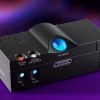

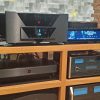
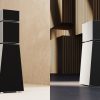






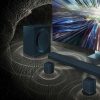

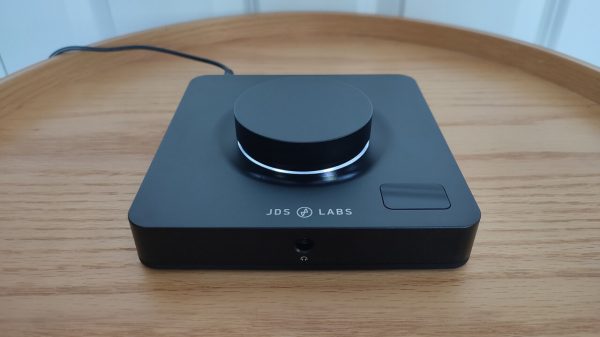


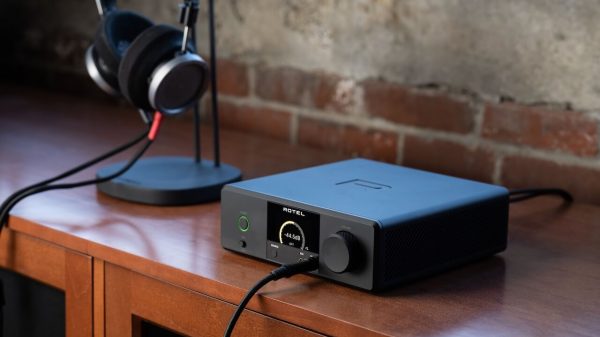
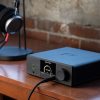
















ORT
May 22, 2023 at 11:12 pm
Welcome back! It is wonderful to read you again! I trust all is well and getting better by the review.
🙂
ORT
W. Jennings
May 23, 2023 at 7:22 pm
I am indeed improving but still have a ways to go to be 100%. This review was done prior to the issue cropping up and had just been stuck in the hopper as it were for a bit. I’ve got several other pre-issue reviews still in the pipeline as well so you’ll likely see those arrive shortly too. That having been said, I have started doing some listening for a couple DAP reviews and finding that my biggest issue at present is my ear gets fatigued much more quickly than it used to so I am having to do my testing in small increments which may mean I don’t get things done quite as quickly, but I’m happy to report that I am finding it possible to get back to doing at least some of what I love and will likely be back to doing more reviews here shortly.
Wiljen
ORT
May 26, 2023 at 4:12 pm
The quality of your thoughts on the equipment that brings us the music is worth waiting for. I say that with all sincerity, my friend.
In all ways and for always, be well brother.
ORT